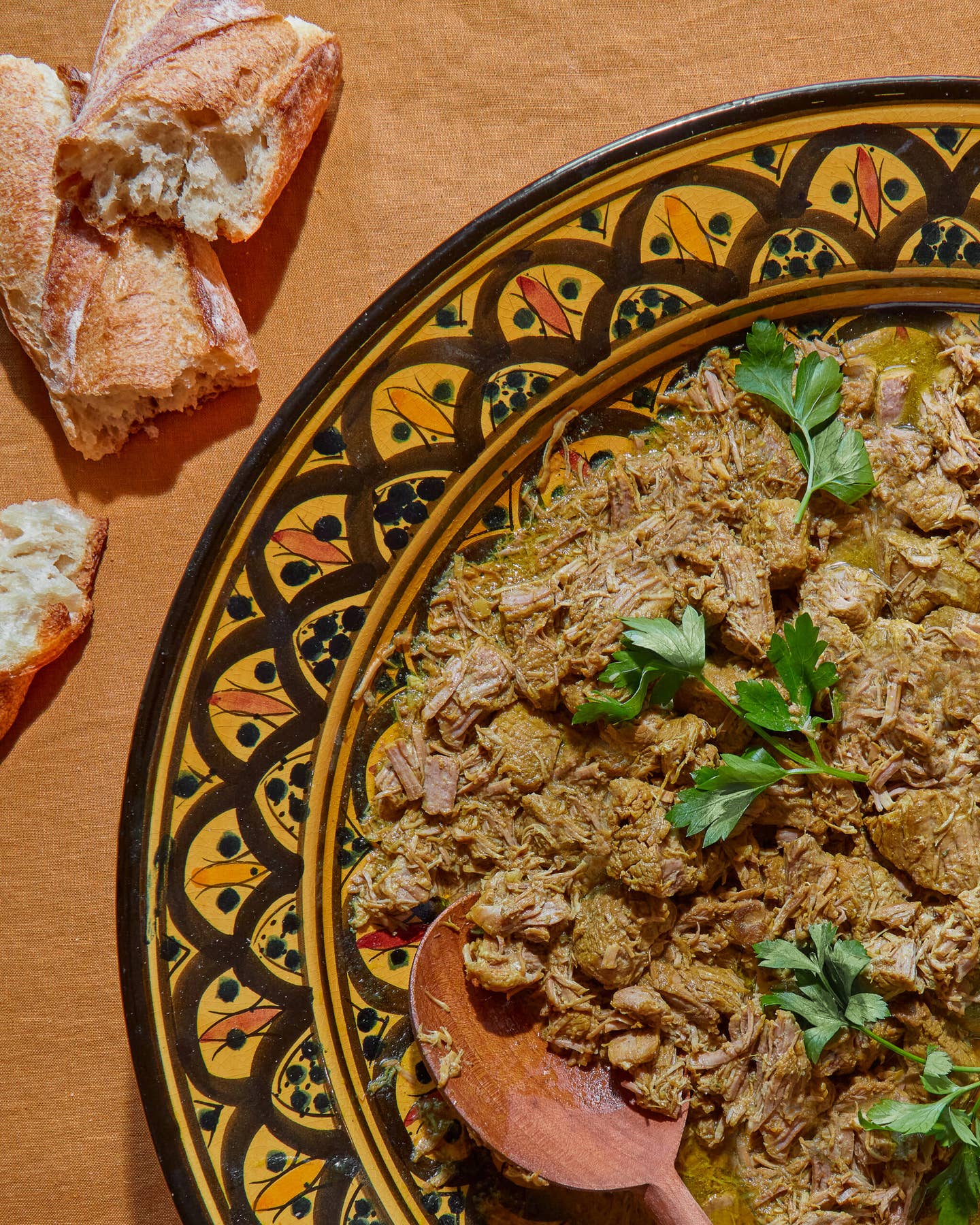Marrakech’s Best-Kept Food Secret Is (Literally) Beneath Your Feet
You’ve heard of tagine, but tangia—a heavenly lamb stew flavored with saffron, garlic, and preserved lemons—is the Moroccan dish you need to try next.

If you’ve tasted Moroccan food, chances are you had tagine or couscous, the country’s best-known dishes. But unless you’ve spent time in the back alleys of Marrakech, my adopted city of 12 years, you probably haven’t come across the most delicious (and easiest) Moroccan meal I can think of: tangia.
When a new Moroccan acquaintance learns that I call Marrakech home, the first question they often ask is, “Do you know how to make tangia?” That’s how synonymous the dish is with the city. And it always leaves an impression on visitors, like bagels in New York or gumbo in New Orleans.
Tangia is a super-slow-cooked meat stew made with mutton (mature lamb) or beef. Containing no vegetables (unless you count the garlic), it’s all about the aromatics: preserved lemons, saffron, Moroccan olive oil, and heaped spoonfuls of cumin. There are no strict measurements, as everything is hastily tucked into a clay urn with an opening just large enough to fit a hand inside. A lid fashioned from parchment paper is deftly tied with string around the top, and the tangia is ready to be cooked.
Kitchens remain the realm of women here in Morocco, which makes it all the more surprising that tangia is customarily made by men. My husband, who grew up in the city, jokes that the dish is so low-effort that even a Moroccan man spoiled by his mother’s cooking can make it: You basically dump meat, water, and spices into a pot and leave it to stew for a few hours. The result is a broth bursting with flavor moistening hunks of lamb so tender they fall apart with a gentle touch.
The history of tangia is hazy but can be traced to the Marrakech medina, or ancient market quarter. Before the French arrived in Morocco, locals observed the weekend from Friday (the Islamic holy day) to Saturday. On their days off, Marrakechi men would meet in the park for a guys-only meal, which is how tangia was born.
Tangia’s most important ingredient is time, which is why preparations usually begin a day in advance. It must cook for hours, ideally overnight, in a pot half buried in glowing embers. The heat slowly circulates inside, suffusing the meat with the fat and spices and creating the Moroccan equivalent of a confit.
But the most fascinating aspect of tangia is not the ingredients but where it’s traditionally cooked—deep underground beneath the community hammam, or bathhouse. (Long before indoor plumbing was standard, Moroccans relied on hammams for personal hygiene; they remain integral to the culture today.)
In these hot, sooty lairs, a fire tender (mul farnatchi in Arabic) feeds the flames of a wood-burning furnace that heats the water for the bathhouse. But this firekeeper has a second job: neighborhood tangia chef. For about a dollar apiece, he’ll burrow your tangia in the coals for a few hours, ensuring it slow-simmers to perfection and does not burn. My local firekeeper is Abdoujalil, but you aren’t likely to see him on a walk through the medina—he works down an ancient flight of stone stairs behind an unmarked entrance.
While furnace-cooked tangia is a true delicacy, modern cooks (in Morocco and abroad) can replicate that texture and flavor on the stove. A pressure cooker further speeds up the process.
As an American woman, I’ve never been invited to one of those coveted “boys-only” picnics, but that doesn’t mean I—or you—shouldn’t take every opportunity to eat this comforting dish that tastes more and more like home every day.
Recipe
Keep Reading
Continue to Next Story










